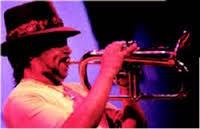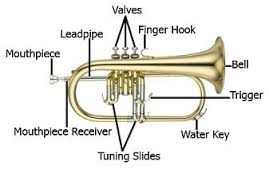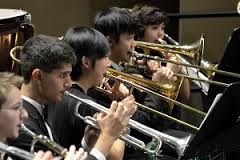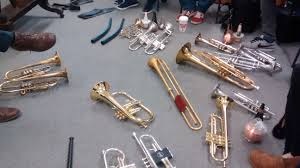
Music is an unspoken language which is also a symbol of the sound of victory and triumph. Since times immemorial, brass instruments have been associated with a loud, unique sound towering above all the other sounds of music. During the 18th century, brass instruments were used mainly by military bands to lift the morale of the soldiers. Horn, trumpets and bugle were also played to stir a feeling of patriotism amongst the common people and to encourage them to join the battle front. Quest for a different sounding brass instrument led to the creation of a new version of horn, the Flugelhorn. Belonging to the brass and wind family of musical instruments, the Flugelhorn is distinguished by its mellow and dark tones. Flugelhorn resembles a trumpet, but has a conical body. Music for the Flugelhorn and the trumpet is the same but the conical construction of a Flugelhorn is what makes it different from the bright sounding trumpet. Its soft mellow sound is ideally suited for solo renditions. The dark and warm sound of a Flugelhorn is a welcome contrast from the high pitch sound of other brass instruments.
In the earlier centuries, brass instruments were made from natural resources without valves, pistons and keys in many parts of the world. However, around the mid–18th century period, an Irishman named John Halliday invented a brass instrument in the form of a keyed bugle. Later in Europe, many inventions led to the making of brass instruments with keys, pistons and valves. Travellers brought along with them the new brass instruments. It was during the Civil War of America during 1861–1865 that villagers adopted bands with brass instruments and played them as a matter of pride, a morale boost and as means of entertainment. During this period, a particular type of instrument known as over–the–shoulder horn became an essential part of the bands. The making of this instrument had round tubing with a bell–shaped mouth, which was placed over the player’s shoulder. However, further inventions led to the making of the Flugelhorn in the 19th century.

A Flugelhorn works on the principle of lip movement and fingering system similar to other brass wind instruments. Sound is produced in the Flugelhorn on the same mechanism like the trumpet and cornet, which is by buzzing of the lips against the mouthpiece. The difference is the additional four–piston valve and a rotary valve fitted on to the Flugelhorn. The trumpet and the cornet players can play the Flugelhorn with ease by adopting a different style. The pitch range of the Flugelhorn is low and the tone is dark. The timbre of Flugelhorn is soft and mellow, even if it is played at a louder pitch and note.

Parts of a Flugelhorn are mouthpiece, mouthpiece receiver, lead pipe, valves, finger hook, bell, trigger, water key and tuning slides. The Flugelhorn is a recent addition to the brass family and is mostly made of metal.

A Flugelhorn plays soft and mellow tone. It is widely used in symphonies, jazz, solo and popular music. Sometimes, it features in the orchestra too. The Flugelhorn is also used in pop song arrangements as well as solo recordings.

There are four types of Flugelhorn: Alto (a deep, cornet–like mouthpiece), Bass, Tenor (brass with German silver ferrules and valve mechanism) and Sopranino. The variation is in the structure and in the octaves of the instrument.

A Flugelhorn was mostly played by the jazz musicians in the 1950s. Notable amongst them is Joe Bishop of Woody Herman band and Miles Davis popularized it by playing it in arrangements. In the mid–1970s, Chuck Mangione played the Flugelhorn in his jazz–pop hit songs. Pop Flugelhorn players include Rick Braun, Zack Condon and Scott Spillane.
Flugelhorn belongs to the brass and wind family of musical instruments. Frankfurt University of Music and Performing Arts in Germany and Ecole Normale de Musique de Paris in France are among the notable schools for music. Learning to play it may take weeks, months or a year or more. Sound is made by buzzing. Steps involved in learning the instrument are:
- Buy or rent a Flugelhorn and learn to buzz on the mouthpiece.
- After buzzing, learn to lay the notes by pushing the valves numbered 1, 2 and 3. The highest pitch is the 3rd valve placed near the bell.
- Learn to play the scales, notes and push the valves to play the different notes of C, D, E, F, A and B by the tightening of lips.
- Leave all the valves and the note produced is a C, which is the most played. The Flugelhorn is fitted with a 4–psiston valve and a rotary valve to produce dark and mellow tones.
G Kowledge of | 0 Comments >>
0 Comments
Leave Comment
Your email address will not be published. Required fields are marked.